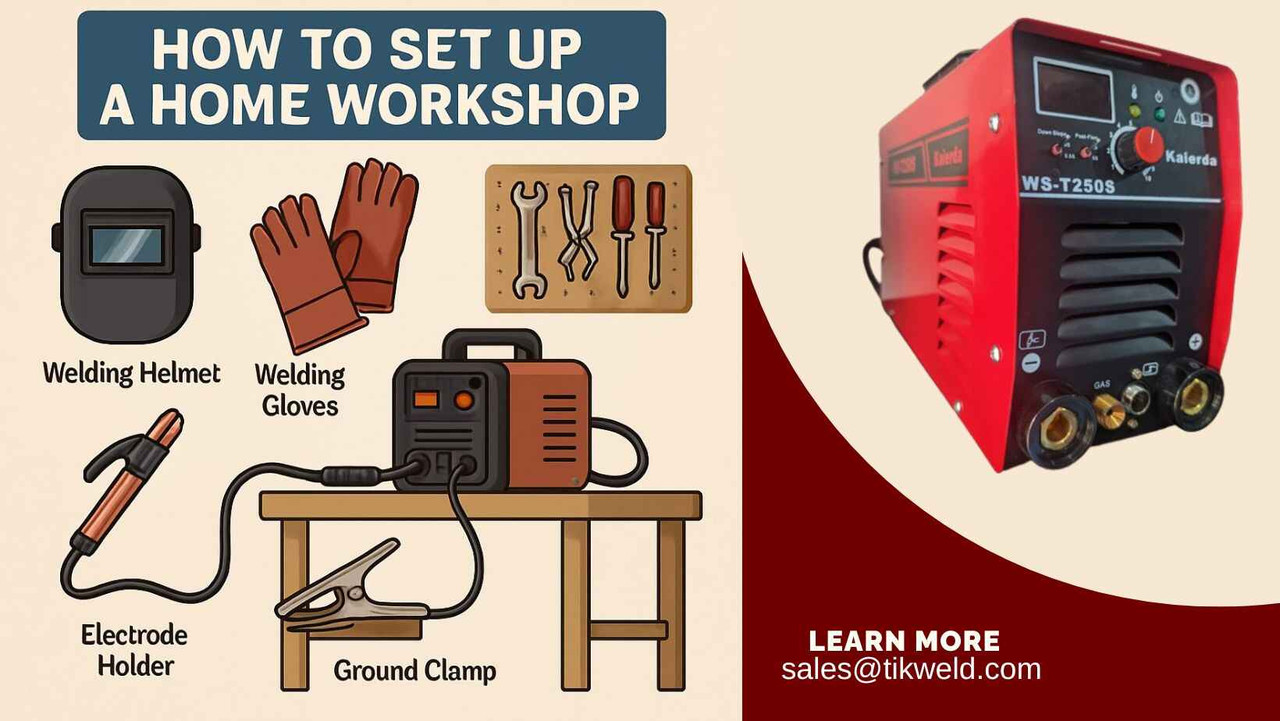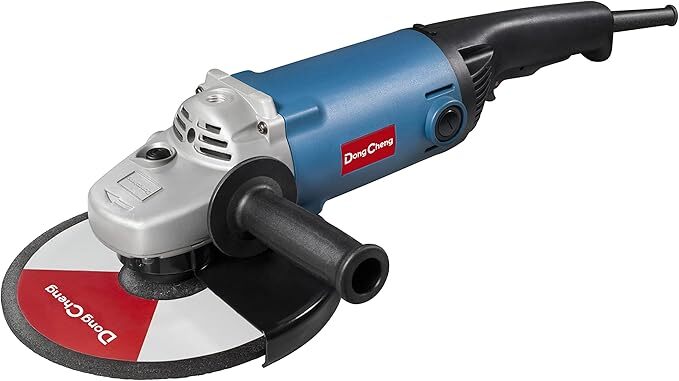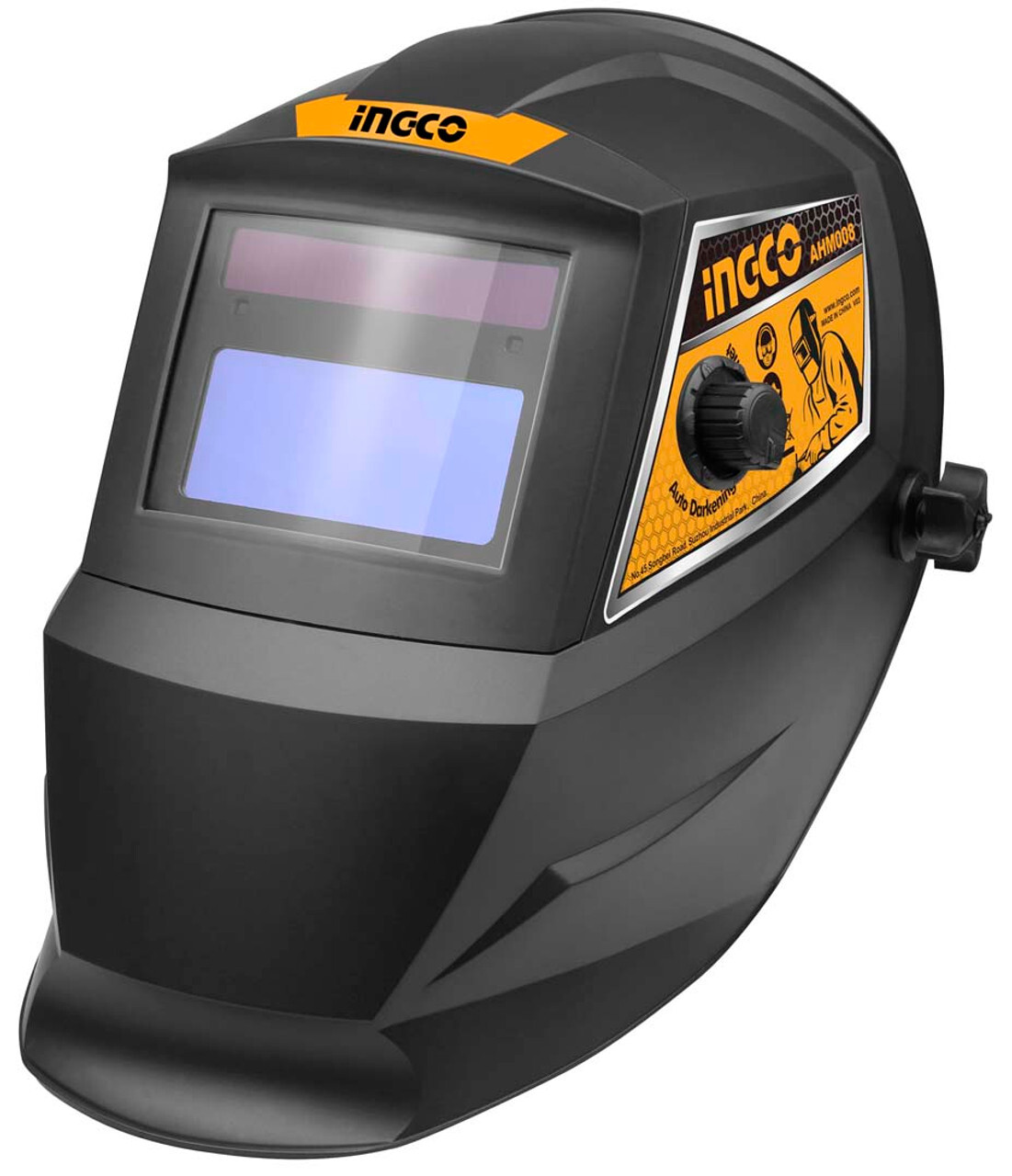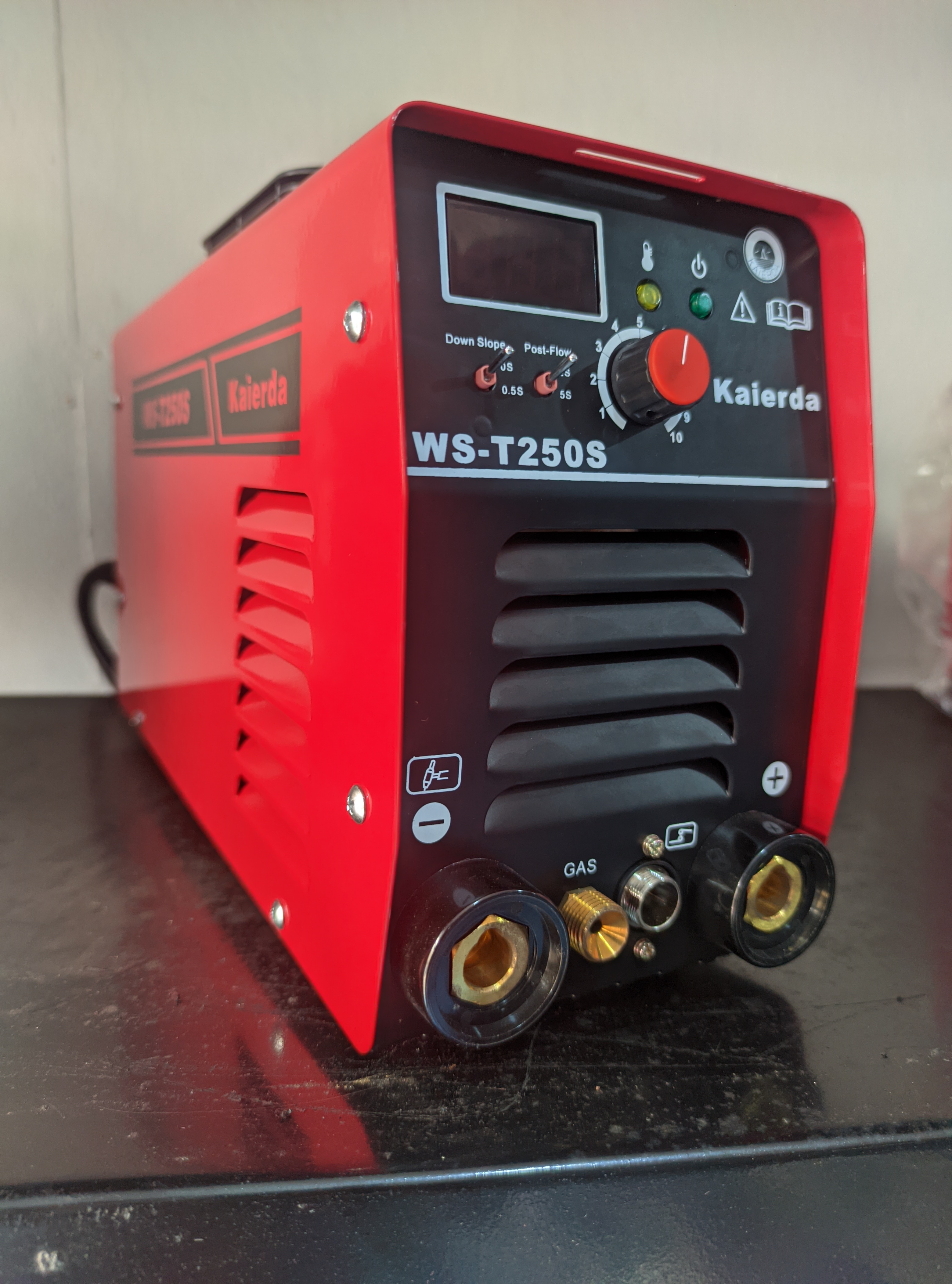How to Set Up Your Home Workshop with the Right Welding Tools
Introduction
Welding is more than a skill, it’s a gateway to building, fixing, and creating just about anything made of metal. Whether you're restoring classic cars, fabricating frames, making metal art, or simply fixing broke n gates, a well-equipped home workshop is the foundation for safe and efficient welding.
The good news? You don’t need a massive shop or industrial setup to get started. With the right tools, safety measures, and smart planning, you can transform your garage, shed, or even a corner of your basement into a capable and productive welding space.
This guide walks you through everything you need to know what welding tools to invest in, how to lay out your space, and how to make safety a permanent feature of your home workshop.
Define Your Welding Goals
Before buying tools or setting up your workbench, take a moment to clarify your welding objectives. Your answers will determine the type of equipment you’ll need and how your workshop should be organized.
Ask Yourself:
- What type of projects will I work on?
Home repairs? Automotive work? Custom fabrication? Hobby art? - What materials will I weld most often?
Mild steel, stainless steel, aluminum? - How often will I use the workshop?
Weekend warrior? Daily DIYer? Light contract work?
Understanding your goals will help you avoid buying tools you don’t need—or underestimating the safety features necessary for long-term success.
Choose the Right Welding Process
Different welding techniques offer different advantages. The right process depends on your skill level, budget, and the type of work you'll be doing.
MIG Welding (GMAW)
MIG (Metal Inert Gas) welding is ideal for beginners because it’s easy to learn and offers fast, clean welds.
- Pros: Great for mild steel and light fabrication
- Best for: Automotive work, furniture, light structural repairs
- Equipment: MIG welder, solid wire, shielding gas (typically Argon/CO₂)
TIG Welding (GTAW)
TIG (Tungsten Inert Gas) welding offers precision and clean welds on a wide variety of materials, including aluminum and stainless steel.
- Pros: Excellent control, high-quality finishes
- Best for: Metal artwork, thin materials, aerospace-quality welds
- Equipment: TIG welder, tungsten electrodes, filler rods, shielding gas (Argon)
Stick Welding (SMAW)
Stick welding is rugged, portable, and works well outdoors and on thicker metals.
- Pros: No shielding gas needed, works in windy or rough conditions
- Best for: Repairs, heavy-duty welding, farm equipment
- Equipment: Stick welder, electrodes
Tip: If you're unsure, consider a multiprocess welder that can handle MIG, TIG, and Stick welding. It gives you flexibility as your skills and project needs grow.
Essential Welding Tools and Equipment
Now that you’ve chosen a welding process, it’s time to gear up. Here are the must-have tools and gear every home welder should have in their workshop:
Welding Machine
Your welder is your workshop’s engine. Choose one that matches your preferred welding method and material thickness.
- MIG Welder: Easy setup, great for most DIY jobs
- TIG Welder: Precise, great for thinner materials and stainless
- Stick Welder: Ideal for outdoor or heavy-duty use
- Multiprocess Welder: Best long-term value if you plan to grow
Look for features like:
- Adjustable voltage and amperage
- Thermal overload protection
- Portability (inverter welders are lighter and compact)
Angle Grinder
Essential for:
- Cleaning and prepping metal surfaces
- Removing slag (after stick welding)
- Smoothing and finishing welds
Choose a model with at least 750W power and keep spare cutting, grinding, and flap discs.
Welding Helmet
Protects your eyes and face from sparks and UV rays.
- Go for auto-darkening helmets with adjustable shade settings
- Look for fast reaction time (1/10,000th sec or better) and large viewing area
Protective Gear
Welding produces intense heat, bright light, and flying sparks—making proper personal protection a must.
Essentials:
- Welding Gloves
Heavy-duty, heat-resistant gloves made of leather or Kevlar.
MIG and stick welding require thicker gloves; TIG gloves can be thinner for dexterity. - Welding Jacket or Apron
Choose flame-resistant materials like leather or treated cotton. Avoid synthetic fabrics that melt. - Safety Glasses
Wear under your helmet to protect against grinding debris or accidental flashes. - Welding Boots
Steel-toed, heat-resistant boots with slip-resistant soles. Avoid sneakers or open footwear. - Respiratory Protection
Depending on your workspace and materials, wear a welding respirator or at least a dust mask when grinding or welding galvanized steel.
Comparison Table: Welding Processes for Home Workshops

Setting Up Your Workshop Space
Choosing the right space for your welding setup is as important as the tools themselves.
Ideal Locations:
- Garage or Detached Shed: Offers ventilation and space to isolate fire risk.
- Well-Ventilated Basement: Acceptable for light welding if paired with strong fume extraction.
- Outdoor Work Area: Stick welding is best here, but weather can be a limitation.
Layout & Workflow Tips:
- Work Table: A sturdy, fire-resistant metal workbench is essential. Avoid wooden benches.
- Tool Zones:
- Grinding/Cutting Station (ideally separate to reduce spark contamination)
- Welding Area (centered around your workbench)
- Storage Corner (for consumables, helmets, accessories)
Allow 3–4 feet of clearance around your welding table for safe movement.
Power Supply Considerations
Welding machines can draw substantial power. Planning your electrical setup avoids tripped breakers and ensures consistent performance.
Key Points:
- Voltage Requirements:
- Light-duty welders: 110V (standard household circuit)
- Medium–heavy-duty: 220V (requires a dedicated outlet or breaker)
- Circuit Breaker:
- Install a dedicated 20–50 amp breaker depending on the welder’s draw
- Extension Cords:
- Use only welding-grade heavy-duty cords (10 or 8-gauge)
- Grounding:
- Ensure your workbench or welding station is properly grounded for arc stability and safety
Tip: Consult a licensed electrician if you're installing a 220V line in your home.
Ventilation & Fume Extraction
Welding generates smoke, metal vapors, and ozone—all of which can be hazardous if inhaled regularly.
Best Ventilation Practices:
- Open Garage Doors & Windows: Natural airflow is helpful but not always enough.
- Fume Extractor Units: Specialized fans or fume arms that suck and filter welding smoke.
- Exhaust Fan with Ducting: Install one near your welding zone to draw out airborne contaminants.
- Portable Fans: Aim them to push fumes away from your face, not just around the room.
- Respiratory Mask: Especially important for welding galvanized or painted metals.
Remember: Good ventilation keeps your lungs safe and ensures better arc performance.
Storage and Organization Tips
A well-organized workshop saves time, reduces clutter, and prevents accidents. Here’s how to keep everything tidy and accessible:
Smart Storage Ideas:
- Wall-Mounted Tool Racks: Hang grinders, clamps, and helmets for quick access.
- Rolling Welding Cart: Keep your welder, cables, and accessories mobile and organized.
- Pegboards with Hooks: Ideal for organizing small hand tools like pliers, hammers, and wire brushes.
- Cylinder Stands or Chains: Always store gas cylinders upright and secure them with a chain or bracket.
- Fireproof Cabinets: Use to store flammable consumables, chemicals, and cleaning agents.
Label everything, especially electrodes and filler rods, to avoid contamination or confusion.
Safety Essentials You Shouldn’t Ignore
Welding carries fire risks, electrical hazards, and exposure to toxic fumes. These safety tools are non-negotiable:
Must-Haves:
- Fire Extinguisher (Class ABC or CO₂): Easily accessible and inspected regularly.
- First Aid Kit: Stock with burn cream, eye wash, and adhesive bandages.
- Welding Curtains or Blankets: Contain sparks and protect nearby areas or people.
- No-Flame Zone: Keep your workshop free of flammable items like paper, gasoline, wood, and solvents.
- Lighting: Bright, focused lighting ensures safe and accurate work.
Tip: Always have a “safety check” routine before and after every welding session.
Budgeting and Sourcing Your Tools
You don’t need to buy everything at once. Start with the essentials and upgrade as your skills and projects grow.
Budget Tips:
- Prioritize quality over quantity—especially for your welder and helmet.
- Look out for bundle deals on beginner welding kits.
- Buy from reputable suppliers such as:
These vendors offer reliable brands and after-sales support for welding equipment and consumables across Nigeria and beyond.
Frequently Asked Questions
1. Can I weld safely in my garage?
Yes, provided you have adequate ventilation, fire safety tools, and isolate flammable materials.
2. What’s the best welder for a beginner?
A MIG welder is ideal for beginners due to its ease of use and versatility for most home projects.
3. Do I need a 220V outlet for welding at home?
Not always. Many entry-level MIG and Stick welders operate on 110V, but heavier machines may require 220V.
4. Is TIG welding harder to learn than MIG or Stick?
Yes. TIG welding requires more precision and control, making it better for experienced users.
5. What PPE is mandatory for welding?
At a minimum: auto-darkening helmet, fire-resistant gloves and jacket, steel-toed boots, and eye protection.
Related Articles
Essential Tools for a Fully-Equipped Welding Workshop
Setting up a Welding Workshop in Nigeria
Must-Have Welding Accessories for Safe and Efficient Welding in Nigeria
Conclusion
Setting up your home welding workshop is a rewarding investment—both in skill and creativity. With the right equipment, smart layout, proper safety, and trusted suppliers, your space can rival that of a small professional shop.
Start with clear goals, choose your tools wisely, and always make safety a core part of your process. Whether you're tackling DIY home repairs, building metal furniture, or chasing your welding passion, your well-planned workshop is the launchpad.
Ready to build your dream workshop? Explore high-quality welding tools, safety gear, and expert advice at Tikweld. Equip yourself with the best to weld with confidence.











